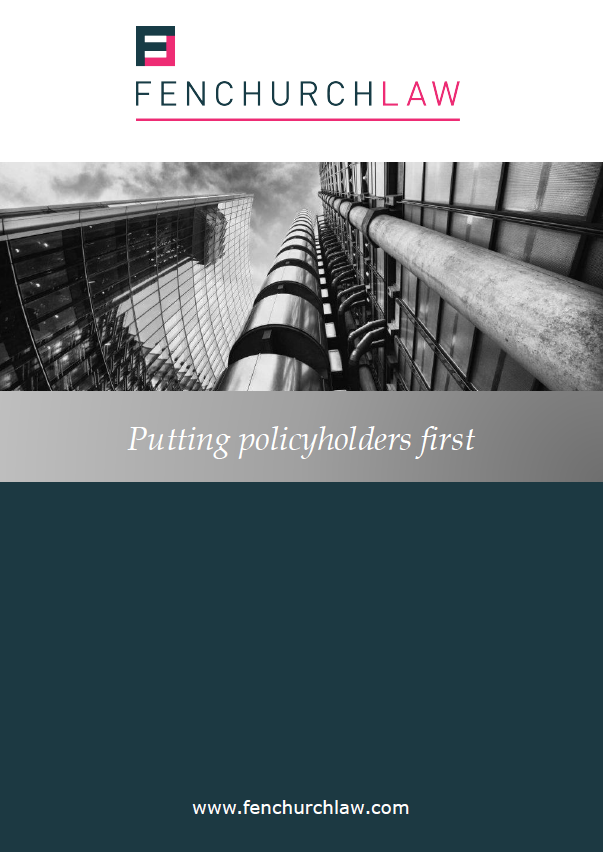
The Good, the Bad & the Ugly: 100 cases every policyholder needs to know. #1 (The Bad). Why Wayne Tank is wrongly decided.
Welcome to a new series of blogs from Fenchurch Law: 100 cases every policyholder needs to know. An opinionated and practical guide to the most important insurance decisions relating to the London / English insurance markets, all looked at from a pro-policyholder perspective.
Some cases are correctly decided and positive for policyholders. We celebrate those cases as The Good.
Some cases are, in our view, bad for policyholders, wrongly decided, and in need of being overturned. We highlight those decisions as The Bad.
Other cases are bad for policyholders but seem (even to our policyholder-tinted eyes) to be correctly decided. Those are cases that can trip up even the most honest policyholder with the most genuine claim. We put the hazard lights on those cases as The Ugly.
At Fenchurch Law we love the insurance market. But we love policyholders just a little bit more.
#1 (The Bad)
Concurrent proximate causes and insurance claims: why Wayne Tank is wrongly decided.
As Rob Merkin says in Colinvaux, there is a logical fallacy at the heart of the Court of Appeal’s decision in Wayne Tank and Pump Co v Employers’ Liability Assurance Corporation [1974] QB 57. The case concerns concurrent proximate causes of liability / loss sustained by a policyholder in an insurance context. The Court of Appeal, held that whereas the policyholder can recover when one cause is insured and the other is not insured, the policyholder is unable to recover when one cause is covered and the other is excluded.
The problem with that approach is exemplified when a policyholder has two insurance policies which each cover one of the two concurrent causes, and exclude the other. The issue is more common than most policyholders would expect, and arises perhaps most often where physical damage occurs to someone else’s property as a result of both a workmanship failure (commonly insured by public liability policies, but excluded by professional indemnity policies), and a design failure (insured by professional indemnity policies, but commonly excluded by public liability policies).
In that situation Wayne Tank says that the policyholder cannot recover under either policy, despite having paid premiums in respect of both of the risks which have given rise to the loss. For that reason we believe the case is wrongly decided, and should not be followed when the issue next reaches the Supreme Court. In the meantime, while the decision remains good law, here are our thoughts about arguments that policyholders can use if their insurers refuse to pay a claim on the basis of Wayne Tank.
Option 1: to apply the approach taken by the House of Lords in Fairchild v Glenhaven Funeral Services Ltd [2003] 1 AC 32, where the usual rules of causation were abandoned in order to ensure that the Claimant was able to recover damages where it could demonstrate that one of two defendants must be at fault, but to determine which one. As has been noted, the Fairchild decision seeks to avoid the very consequence created by “mirroring” exclusions in professional indemnity and public liability policies.
Option 2: to follow the Court’s approach to “other insurance” clauses: i.e. to uphold the clause when an insured has two policies, and one contains an “other insurance” clause and the other policy does not, but to treat the clauses as cancelling each other out when they are present in both policies (It is worth noting that in Wayne Tank the Court only considered the application of a single policy, and so the insured had not paid a premium to cover the full extent of the exposure which gave rise to its loss). The leading authority on “concurrent escape clauses” is Weddell v Road Traffic and General Insurance Co Ltd [1932], where the absurdity of the result that would have been created by giving effect to the escape clauses in each policy was the basis of the Court’s decision:
“The reasonable construction is to exclude from the category of co-existing cover any cover which is expressed to be itself cancelled by such co-existence, and to hold in such cases that
both companies are liable… [otherwise] one would reach the absurd result that whichever policy one looks at it is always the other one which is effective”.
Other news
Singapore’s factory output boom: Is your Business Interruption cover keeping up?
10 December 2025
In the News… is a new blog series from Fenchurch Law that translates today’s headlines into practical insights for…



